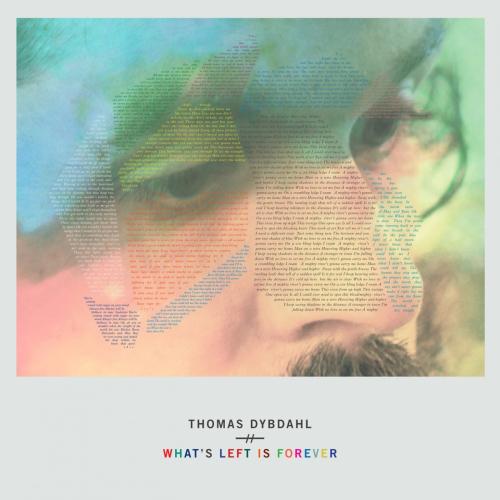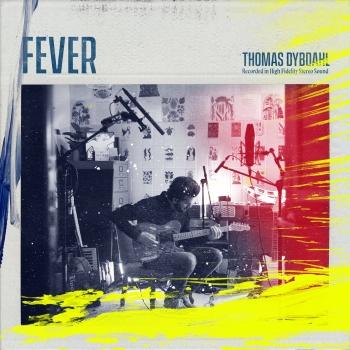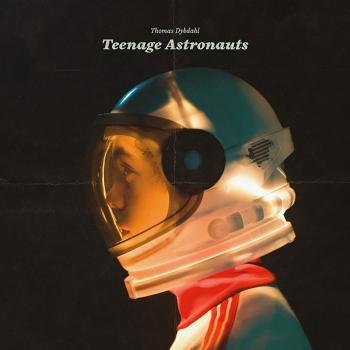
What's Left Is Forever Thomas Dybdahl
Album Info
Album Veröffentlichung:
2013
HRA-Veröffentlichung:
23.08.2017
Das Album enthält Albumcover Booklet (PDF)
Entschuldigen Sie bitte!
Sehr geehrter HIGHRESAUDIO Besucher,
leider kann das Album zurzeit aufgrund von Länder- und Lizenzbeschränkungen nicht gekauft werden oder uns liegt der offizielle Veröffentlichungstermin für Ihr Land noch nicht vor. Wir aktualisieren unsere Veröffentlichungstermine ein- bis zweimal die Woche. Bitte schauen Sie ab und zu mal wieder rein.
Wir empfehlen Ihnen das Album auf Ihre Merkliste zu setzen.
Wir bedanken uns für Ihr Verständnis und Ihre Geduld.
Ihr, HIGHRESAUDIO
- 1 This Love Is Here to Stay 03:19
- 2 Easy Tiger 04:08
- 3 Running on Fumes 04:51
- 4 Shine 03:45
- 5 Soulsister 03:50
- 6 Man on a Wire 03:20
- 7 I Never Knew That What I Didn't Know Could Kill Me 04:40
- 8 Interlude 01:46
- 9 City Lights 03:13
- 10 So Long 03:42
- 11 The Sculptor 03:57
- 12 But We Did 04:50
- 13 This Next Wave Is a Big One 05:00
Info zu What's Left Is Forever
In seiner Heimat Norwegen ist Thomas Dybdahl längst ein Star. Seine bisherigen sechs Alben erreichten dort meist den ersten Platz der Pop-Charts und wurden mehrfach mit Platin ausgezeichnet. Darüber hinaus gewann Dybdal, der zwischendurch auch Erfolge mit der Band The National Bank feierte, schon zwei norwegische Grammys (Spellemannprisen) und diverse andere Preise. Auch außerhalb Norwegens wurde man auf den eigenwilligen Singer/Songerwriter schon aufmerksam. Der britische New Musical Express etwa nannte ihn "Norwegens Antwort auf Nick Drake", während die Kollegen vom Magazin Q ihn als "einen der talentiertesten Singer/Songwriter der norwegischen Szene" bezeichneten. Mit seinem neuen Album "What's Left Is Forever", das von niemand Geringerem als Larry Klein produziert wurde, möchte Thomas Dybdahl nun auch den Rest der Welt erobern. Mit seiner einzigartigen, ausdrucksvollen Stimme und seiner Fähigkeit, ebenso eingängige wie tiefsinnige Songs zu schreiben, sollte ihm dies eigentlich mühelos gelingen.
"Ich kann mich nicht daran erinnern, je von einem Album so begeistert gewesen zu sein wie von diesem", sagt der amerikanische Produzent Larry Klein. Und das will schon etwas heißen! Denn der gelernte Bassist hat in annähernd 30 Jahren schon weit mehr als hundert Alben produziert: darunter zahlreiche moderne Klassiker seiner Ex-Frau Joni Mitchell sowie in jüngerer Zeit Herbie Hancocks "River: The Joni Letters" (das Jazzmeisterwerk, das 2008 Amy Winehouse, KanyeWest, die Foo Fighters und Vince Gill beim Wettstreit um den Grammy für das Album des Jahres schlug!), Melody Gardots "My One And Only Thrill", Curtis Stigers' "Let's Go Out Tonight", Till Brönners "RIO" und Madeleine Peyroux' "The Blue Room".
"Das Album hatte eine ziemlich lange Gestationszeit", fährt Klein fort. "Die ganze Geschichte begann damit, dass mir ein alter Freund, dessen Geschmack ich schätze, eine MP3 von Thomas' Lied 'Lovestory' zuschickte. Da mir dieser Freund sonst nie etwas schickt, weckte das gleich meine Aufmerksamkeit. Mir gefiel die Nummer auf Anhieb, und die musikalische Welt, aus der sie stammte, faszinierte mich. Die MP3 blieb über Jahre hinweg auf meinem Desktop, so dass ich sie immer gleich abspielen konnte. Als Max Hole mir die Gelegenheit bot, ein eigenes Label unter dem Dach von UMGI zu schaffen, dachte ich: 'Okay, jetzt habe ich ein Zuhause, aber wen kann ich dort hineinlassen?' Irgendwie fiel mir da sofort die Sound-Datei ein, die ich schon so lange auf meinem Desktop hatte. Ich hörte mir mehr von Thomas' Musik an. Und je mehr ich hörte, desto überzeugter war ich, dass er der erste Künstler sein sollte, den ich für mein Label Strange Cargo unter Vertrag nehmen würde. Ehe ich mich versah, befand ich mich im Flugzeug auf dem Weg nach Norwegen, um Thomas bei einem Auftritt in Drammen, einem Vorort von Oslo, zu sehen. Zu meiner Freude stellte sich heraus, dass er live genauso fesselnd war."
"Bis unsere erste wirkliche Zusammenarbeit Gestalt annahm, verstrich trotzdem noch einige Zeit", sagt der mit vier Grammys ausgezeichnete Produzent. Um Thomas Dybdahl die Tür zum internationalen Publikum zu öffnen, stellte Larry Klein mit ihm 2011 erst einmal die Compilation "Songs" zusammen, die nicht nur eine von Klein komplett neu abgemischte Auswahl von Songs der bis dahin erschienenen Dybdahl-Alben enthielt, sondern auch ein paar unveröffentlichte Tracks.
Danach begann Thomas damit, Stücke für ein neues Album zu schreiben. Bei einem Treffen in Los Angeles arbeitete Dybdahl zusammen mit Klein an weiteren Songs. "Nach einer Menge Arbeit und nicht weniger Tequila und Wein hatten wir irgendwann annähernd dreißig Lieder zusammen und konnten damit anfangen, eine Auswahl für das Album zu treffen", berichtet Klein. "Wir ließen uns Zeit und versuchten etwas zu erschaffen, das uns beide berührte, etwas das uns von Anfang bis Ende neu und frisch vorkam. Dann schickten wir unser Baby an den wundervollen Tchad Blake [der u.a. für die Abmischung von Alben von den Black Keys und Sheryl Crow einige Grammys gewonnen hat], damit dieser mit der Abmischung beginnen könnte."
"Es ist schwierig, heutzutage etwas wirklich Authentisches, Neues, Anderes zu schaffen", schließt Larry Klein sein Loblied auf Thomas Dybdahl, “etwas, das nicht nur anders ist, um anders zu sein, sondern zugleich auch ehrlich und unmittelbar. Bei den Aufnahmen schlüpften wir abwechselnd in die Rolle des Advocatus Diaboli, um das Beste aus uns herauszukitzeln. Und oft beendet der eine eine musikalische Phrase des anderen. Wir nahmen uns die Zeit, alles vernünftig zu machen, und gingen keine Kompromisse ein. Das Ergebnis kann man nun auf 'What's Left Is Forever' hören."
Der Titel des Albums hat etwas geradezu prophetisches. Denn die Songs, die es schließlich auf das Album geschafft haben, könnten tatsächlich etwas für die Ewigkeit sein. "What’s Left Is Forever" besitzt zweifellos alles, was ein Album zu einem zeitlosen Klassiker werden lässt.
"Gemein ist allen Stücken diese hochsensible, soulgetränkte Stimme, die mühelos das Falsett beherrscht und mal an Marvin Gaye, mal an James Blake gemahnt." (Jazzthing)
„… Thomas Dybdahl schwebt wie nie zuvor souverän über allen Stilarten von Pop über Folk bis Soul und gründet in ebenso eingängigen wie klugen Liedern sein ganz eigenes Klangreich." (Stereo)
Produced by Larry Klein
Thomas Dybdahl
As is often the case with distinctive endeavors, the creative path of Thomas Dybdahl -- the 37-year-old guitarist, singer, songwriter, and native of Sandnes, Norway -- has been, for nearly a decade, all his own.
“I’ve taken an eclectic approach,” Dybdahl says. “I’ve sought to draw influences from the whole spectrum of music -- not only from songwriters and singers but also from contemporary and classical music. I am always trying to infuse my work with all these different influences so that I don’t limit myself, or listeners, to the notion of being just another guy with a guitar.”
As he knows well, several of those strum around, and Dybdahl in one sense is yet another. But on ‘Songs’ -- his U.S. debut, released via Decca Records/Universal on Strange Cargo, an imprint overseen by the renowned musician and producer Larry Klein, whose past close musical associations include Joni Mitchell, Tracey Chapman, Madeleine Peyroux, and others -- Dybdahl distinguishes himself with fire and finesse. The tracks serve as a great introduction for American listeners to the five albums (2002’s ‘...that great October sound’; 2003‘s ‘Stray Dogs’; 2004‘s ‘One Day You’ll Dance for Me, New York City’; 2006’s “Science’; and 2010’s ‘Waiting for that One Clear Moment‘) for which Dybdahl has received steady acclaim internationally and won two Norwegian Grammys.
These are the romantic, introspective, out-going, hum-worthy, adventurous tunes of a guy who once, with characteristic honesty, cited the Mozart Requiem as his favorite piece of music but who laughs off any art-rock ideas of literally trying to reinvent the pop song from a classical music vantage point. For Dybdahl, who grew up playing guitar for hours daily and loved first Metallica and later Led Zeppelin and Jimi Hendrix, it’s all music.
A flexible, carefully detailed melodicism animates Dybdahl songs like “Cecilia” and “B.A. Part,” while other songs, such as “From Grace” and “The Great October Sound,” move that same well-founded sense of melody composition into comparatively more ecstatic and less kinetic states. Dybdahl, whose lustrous tenor behaves with an idiomatic ease, does not believe that only anger is an energy : “I try to find that force,” he says, “that comes from always keeping my calm, from actually holding back. I try to get something out of this implosion -- the opposite of a good rock and roll explosion.”
Dybdahl hails from the land of pop. “I love pop composition,” he says. “What I don’t like is when pop gets used in a reductive manner. Some of the best pop artists and pop records I know come from all kinds of backgrounds and music yet they have firm grips on and understand the pop format. Even though a song may be a pop song and even though it may go on the radio, it can still offer something for the ages; it can happen with the most pop of pop songs. This means something beyond defining the time or trend; it’s accomplished in fusion with history and duration.”
Dbydahl cites an array of inspirations; albums such as Tim Buckley’s ‘Happy Sad’ (1969), Colin Blunstone’s ‘One Year’ (1971), and Serge Gainsbourg’s ‘Histoire de Melody Nelson’ (1971), he believes, stand as examples of music that sacrifices nothing. Dybdahl’s varied sources has meant that his own music can attract equally diverse admirers, from electronica pioneers Morcheeba, who asked him to sing on one of their albums, to designer Philippe Starck, who cites Dybdahl’s music as an inspiration, to photographer Jean-Baptiste Mondino, who shot the cover for ‘Science’, a Starck design.
According to Dybdahl, a chief reason his music turns out as it does is because of his experience with his initial instrument. “I see myself first and foremost as a guitarist,” he says. “That’s where my musicality started. There’s just no getting away from how if one is a guitarist then one thinks musically as a guitarist. As you evolve, you may go on, as I did, to singing as well, however you have started as a guitarist. You’re still approaching music through the guitar, and that has to carry some weight. It makes for some interesting choices along the way, melodically and structurally, because whatever you approach -- singing, other instruments, songwriting -- the work continues to come from the mind of a guitarist. That is controlling.”
A galloping range of influences like Dybdahl’s requires something to pull everything into persuasive wholes. “As a person,” he says, “I’m very focused on balance; everything has to be balanced. It’s all about balance and composition. You might even call it symmetry, even though a good composition doesn’t necessarily need to seem symmetric. As you grow older, though, you see that the need to balance all these things infuses all your choices, and how you want to do things.”
‘Songs’ is an often mesmerizing demonstration of how Thomas Dybdahl does things. It is the sound of how one gifted Norwegian connects with a million other sounds, impulses, colors, and emotions, all assembled with particular sonic poise that always grooves, never overwhelms.
Booklet für What's Left Is Forever














